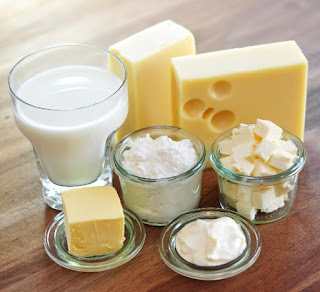IODINE DEFICIENCY DISORDERS || GOITRE || GOITROGEN FOODS
IODINE DEFICIENCY DISORDERS
MICRO MINERALS - IODINE :
Iodine is one of the essential micronutrients required for normal growth and development of the human brain and body. The body contain 15 to 23 mg of iodine. Over 75 per cent of this is present in thyroid gland. The rest is distributed in salivary, mammary,gastric glands and the kidneys.FUNCTIONS of IODINE -
• Iodine plays an important role in the synthesis of triiodothyronine (T-3), and thyroxine(T-4).
• It is important for the normal development of brain.
• Assist in thyroid regulation.
• Thyroid hormones regulate the conversion of carotenr into active vitamin A, the synthesis of protein and the absorption of carbohydrate from the intestine.
SOURCES of IODINE -
Cereals, Pulses, Mustard, Cauliflower, Cabbage, Papaya.
IDD
"Iodine Deficiency Disorders" (IDD) is a major global public health problem. Iodine deficiency is now recognised by WHO as the most preventable cause of brain damage in the world today.
CAUSES OF IDD :
• Environmental Factors : Iodine deficiency is likely to occur in all elevated regions subject to higher rainfall with run-off into rivers. High rainfall, snow and flooding increases the loss of soil iodine which causes the low iodine content of food for man and animals.
In India, though classical endemic belt of IDD is known to exist in sub-Himalayan belt, several studies have shown that IDD endemic pockets do exists in peninsular India as well.
• Goitrogens : Goitrogens are substances that interfere with iodine metabolism. They can interfere at various stages of thyroid hormone homeostasis. The steps include uptake of Iodine, it's oxidation followed by thyroxine to triiodothyronine.
Goitrogens are present in tapioca, sorghum, finger millets, okra, sweet potato, almonds, peaches, soyabeans, lima beans and cassava.
People who live in Goitrous areas should avoid goitrogens. People who live in non goitras areas can include goitrogens in moderation. Goitrogen can not be used as staple food.
• Intrinsic Factors : Rare congenital defects can occur in the hormone synthesis and secretion and peripheral resistance two thyroid hormones can also result in goitre.
SYMPTOMS OF IDD :
• Goitre : Goitre is defined as non-neoplastic (tumour), non-inflammatory and non-toxic enlargement of thyroid gland. The enlargement is apparently compensatory adaptation to lack of iodine required for the synthesis of thyroid hormones.
Simple goitre is a painless condition but if uncorrected it can lead to pressure on the trachea, which may cause difficulty in breathing. The prevalence of goitre is generally more among adolescents, young adults and schoolage children.
• Cretinism : Clinically two types of cretinism are known.
a. Neurological cretinism - mental retardation, deaf-mutism, squint, spastic diplegia - spastic rigidity affecting the the lower limbs leading to characteristics gait and brisk reflexes are the manifestations of Neurological cretinism.
b. Myxoedematous Cretinism - the certain signs are - dry skin, swollen tongue, deep hoarse voice and mental deficiency. Associated skeletal growth retardation and weak abdominal muscles can be observed.
• Hypothyroidism : This is characterized by coarse and dry skin, husky voice and delayed tendon reflexes.Low serum T-4 and normal T-3 elevated TSH levels are found. This condition is common among adults.
• Psychomotor Defects : The child population from iodine deficient areas show poor scores on IQ tests and impaired school performance.
• Impaired Mental Function : This is related with low intelligence levels and high degree of apathy, reflected in lack of initiative and decision making capacity.
PREVENTION :
• National IDD Control Program : Since April 1992 this program is being implemented by Dept. of Health, Govt. of India.
• Salient Feature :
a. Production of iodised salt is liberalised.
b. To ensure the accessibility of of iodised salt at a rate comparable to non-iodized salt.
c. To impart training in undertaking simple Survey in States.
• Iodine Fortification : Iodised salt, iodised oil and iodised water.








Comments
Post a Comment
Please do not enter any spam link in the comment box.